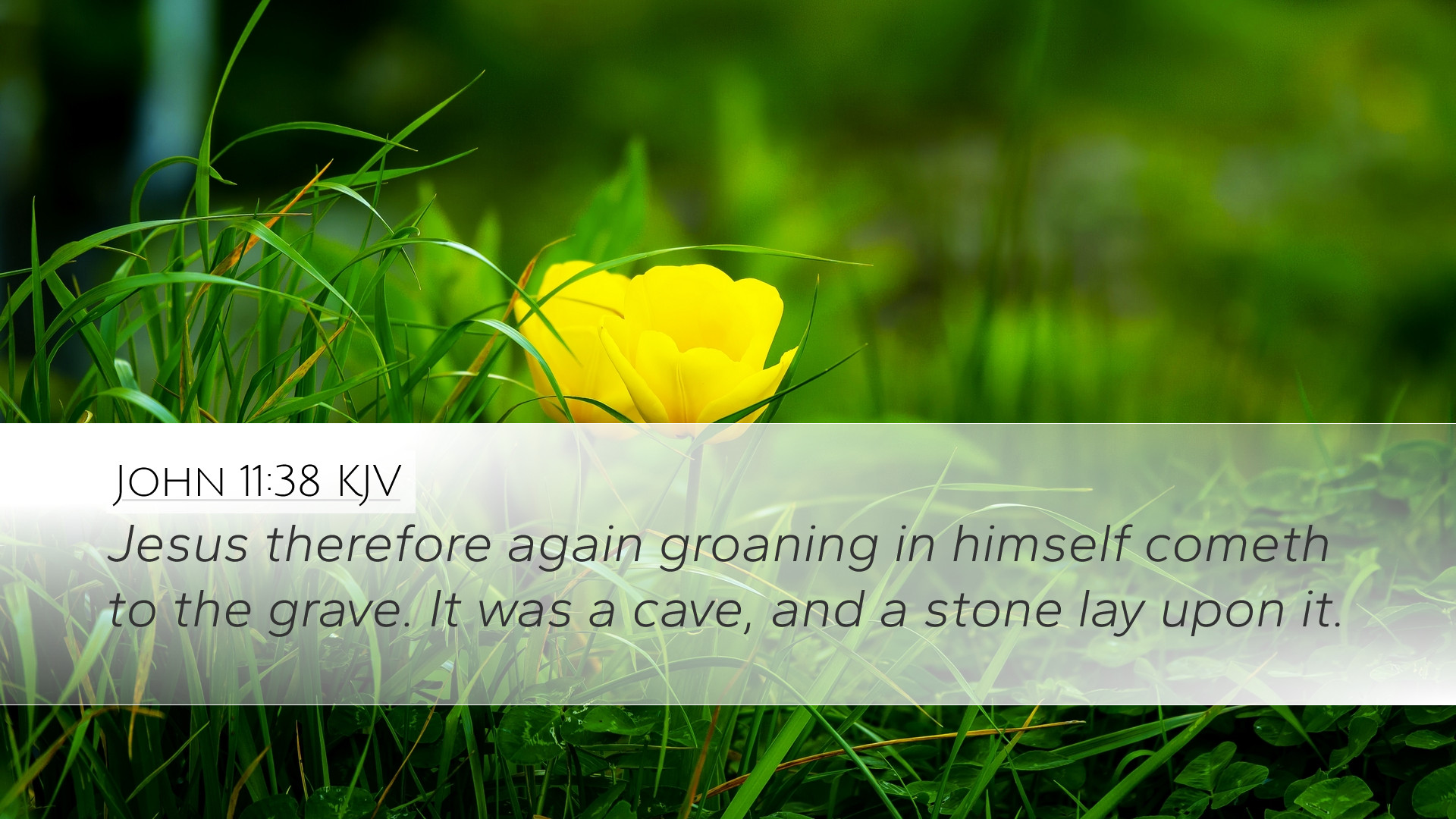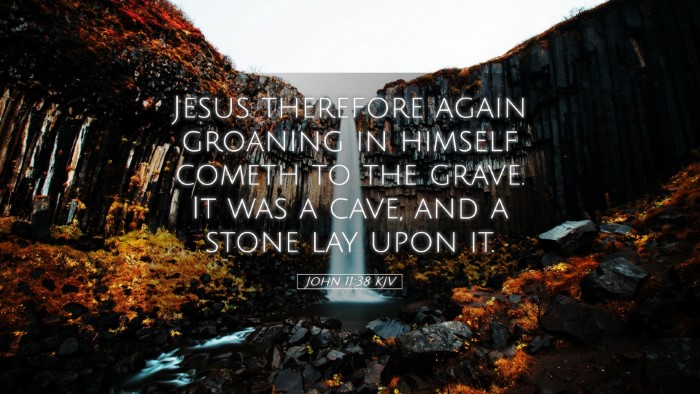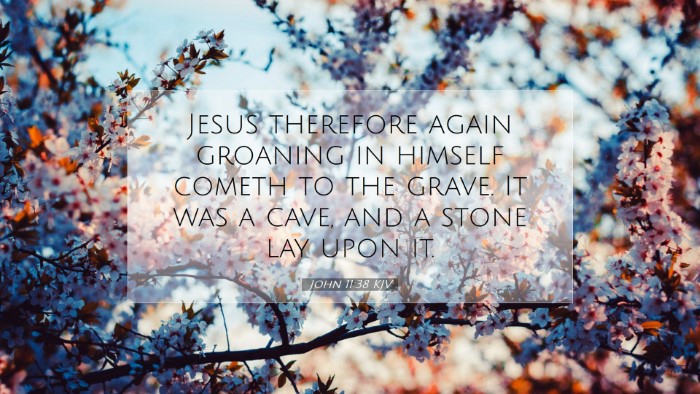Commentary on John 11:38
Verse: “Jesus therefore again groaning in himself cometh to the grave. It was a cave, and a stone lay upon it.”
Introduction
John 11:38 occupies a pivotal moment in the narrative leading to the resurrection of Lazarus. This verse captures the profound emotion of Jesus as He approaches the tomb of His dear friend, illustrating His humanity, compassion, and the significance of death and resurrection. Various public domain commentaries shed light on its implications, particularly concerning Christ's empathy and the nature of His mission.
Matthew Henry's Commentary
Matthew Henry emphasizes the emotional state of Jesus in this verse. He notes that Jesus, before arriving at the tomb, is described as "groaning in himself," indicating deep feelings stirred by the consequences of sin and death. This groaning may suggest not just sorrow for Lazarus’s death but also an expression of anger against the destruction that death brings to humanity.
-
Humanity of Christ: Henry articulates how this moment showcases the genuine humanity of Christ. He wasn't merely fulfilling a miracle; He empathized with those grieving.
-
Preparation for a Miracle: Henry posits that this inner turmoil prepares Jesus and the spectators for the coming miracle—Lazarus's resurrection. The emotional landscape paves the way for the display of divine glory.
Albert Barnes's Notes
Albert Barnes offers a detailed exposition on the significance of the grave described in John 11:38. He points out that the cave represents the finality of death, a visible reminder of mortality, while the stone that lay upon it symbolizes the barrier between life and death. This image serves to illustrate the hopelessness of the situation prior to Jesus' intervention.
-
Symbolism of the Cave: Barnes explains that caves were often used for burial in the Jewish tradition, and their use here emphasizes the tomb's permanence—thus heightening the miracle that is about to occur.
-
The Stone as a Barrier: The stone covering the entrance can be seen as a barrier to both physical resurrection and spiritual life. Barnes relates this to the broader spiritual implications of sin separating humanity from God.
Adam Clarke's Commentary
Adam Clarke delves into the Greek terms used in this passage, particularly the word translated as "groaning." He suggests that it conveys a sense of indignation rather than mere sadness. Clarke points out that this may reflect Jesus's awareness of the greater suffering that sin has brought into the world, which culminates in death—something He came to rectify.
-
Indignation Against Death: Clarke suggests that Jesus's groaning illustrates His indignation against the power of death and the suffering it causes. This insight connects to Jesus's ultimate victory over death through His own resurrection.
-
Importance of the Text: Clarke emphasizes that this moment reveals the heart of Jesus—a Savior who is deeply moved by human frailty and sin. It invites believers to trust in His power to bring life amidst despair.
Theological Implication
The combination of insights from these commentators illustrates vital theological themes:
-
The Compassion of Christ: Jesus's emotional response reveals His genuine compassion for humanity. This is critical for understanding His mission: to offer hope and life.
-
The Power of Christ: The imminent resurrection of Lazarus serves as a precursor to Jesus's own resurrection, showcasing His authority over death. It challenges readers to confront the reality of death and the promise of eternal life.
Conclusion
In John 11:38, we witness a profound moment of divine empathy intertwined with the promise of resurrection. Through the insights of Matthew Henry, Albert Barnes, and Adam Clarke, we gain a deeper understanding of the emotional and theological significance of Jesus's actions as He approaches the grave of Lazarus. This passage remains a powerful reminder of Christ's love and His victory over death, encouraging believers to place their hope in Him, the resurrection and the life.


